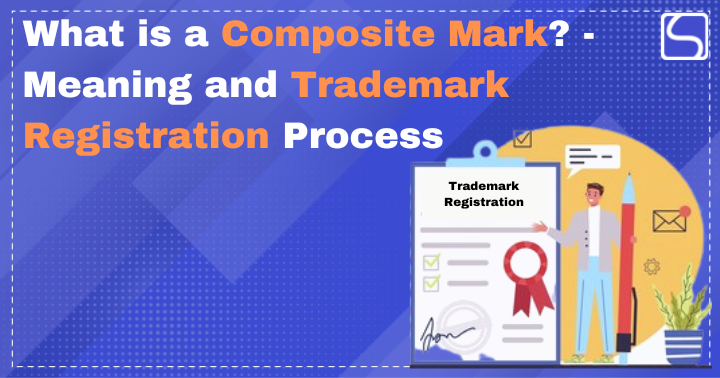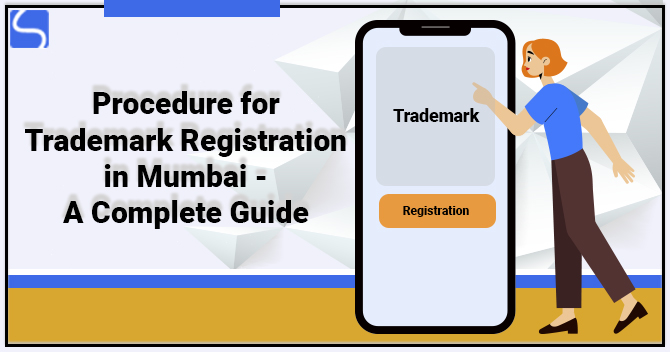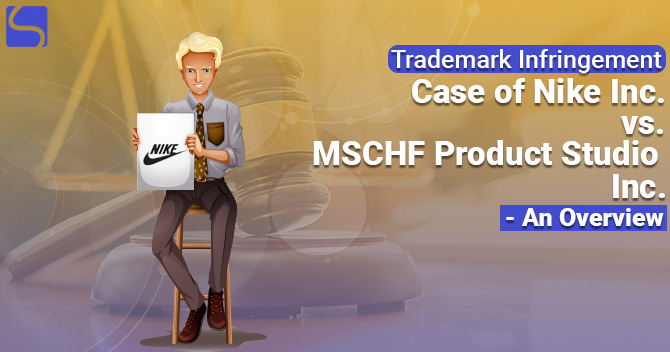What is a Composite Mark? – Meaning and Trademark Registration Process

Karan Singh | Updated: Oct 07, 2022 | Category: Trademark
Some businesses/companies choose to Trademark their entire logo along with the business name as a Single Trademark; this is a Composite Trademark, for example, Samsung, Coca-Cola, McDonald’s logo etc. Other businesses will choose to only Trademark the product name or business name, such as Apple has trademarked the word “Apple” and their logo as two separate marks. In this blog, we will discuss Composite Marks more.
Table of Contents
What is the Meaning of a Composite Mark?
A Composite Mark is a mark that includes a combination of elements. These elements can include shapes, words, scents, devices, sounds, and/or colours. The best example of a Composite Mark is a logo because a logo usually consists of shapes, words, specific colours & at times, images. If you wish to Trademark a Business Logo, then it is likely you will be getting a Composite Trademark in order to securely Trademark the totality of the logo, not just an aspect of it. Therefore, this type of mark refers to its overall appearance or the Trademark taken as a whole.
Logo Composite Mark – Meaning
A Logo Composite Mark includes the name of the brand in the logo. It is a combination of the brand logo and the brand name, for example, Coca-Cola & BMW. Whereas, Levi’s has a complex logo composite Trademark that incorporates the placement of its label at the back of its pants or jeans.
On the other side, because of a growing trend of Trademark Registration, many start-ups are left with the option to Trademark their logo Composite as most of the intended names are already Trademarked, leaving fewer options for new start-ups to Trademark. Although they face a Trademark Objection or Trademark Opposition, they still get clear on the ground that they are uniquely presented & have a unique mark. Usually, it is a bad idea to use a Brand Name that isn’t entirely unique, as problems could arise should your brand pose a threat to the already registered brand name.
Benefits of Registering a Composite Mark in India
The following are the benefits of registering a Composite Trademark in India:
- Registration grants statutory protection to a Trademark;
- A registered mark owner or proprietor has the option to initiate infringement actions by filing a suit for infringement in India;
- The owner of a registered mark can use the ® symbol in India in respect of those goods/services for which the mark or logo has been registered. Using this symbol unless the mark has been registered in India is unlawful. Using the symbol TM with Trademark simply means that one claims to be the proprietor of the Trademark through the mark may not be registered.
Who can apply for Trademark Registration?
An application for Trademark Registration of Composite Mark may be filed by any person claiming to be the owner of a mark: Such persons include:
- Partnership Firms;
- Trust;
- Limited or Private Limited Company;
- Individual;
- Sole Proprietor;
- Joint Individuals or Companies;
- Other Legal entities
Documents Required for Trademark Registration of Composite Mark
Following are some crucial documents required for Trademark Registration of Composite Mark in India:
As Individual& Sole Proprietorship:
- Copy of the logo or mark. In case the logo or mark is not provided, the application for a Trademark can be filed for the word.
- Signed Form-48, this form is an authorisation from the applicant to a Trademark Attorney for filing the Trademark application on their behalf.
- Identity proof of the individual or proprietor.
- Address proof of the individual or proprietor.
- Partnership or LLP or Company:
In the case of an LLP/Partnership Firm, the entrepreneur would have to submit the following:
- Copy of logo or mark (optional);
- Signed Form -48;
- UdyogAadhar Registration Certificate[1];
- Partnership Deed or Incorporation Certificate;
- Identity & address proof of signatory
- As an MSME: if the Trademark Registration is done by a Micro, Small, or Medium Enterprise (MSME), then they should provide the UdyamAadhar Registration Certificate issued by the Ministry of MSME.
- As a Hindu Undivided Family:
- Deed of the Constitution of HUF (Hindu Undivided Family);
- PAN Card of HUF.
- As a Society: If a Society is pursuing the procedure for Trademark Registration, then it shall submit the Certificate of Registration (CoR) issued by the Registrar of Co-operative Societies.
- As a Trust: A Trademark application filed by a Trust should furnish the following vital documents as valid proof of its identity:
- Trust Deed duly executed on a stamp paper;
- Trust Registration Certificate;
- PAN Card in the Trust’s Name.
Following are some common documents required for Trademark Registration for all types of businesses:
- Power of Authorisation of an Agent;
- Graphical Representation of Trademark;
- User Affidavit.
Procedure for Registering a Composite Mark
Following is the step-by-step procedure for registering a Composite Mark:
Step 1: Trademark Search: The first that you need to follow is Trademark Search; this is to check whether the mark is available or not. Once you decide on an available Trademark, you can move to step 2.
Step 2: Filing of Trademark Application: Once the first step is completed, then you need to file the Trademark application and submit it to the Registrar of Trademarks. The Trademark Registration application should be in a prescribed manner & filed along with the prescribed fees. The application for a Trademark Registration can be made online or in any Registrar’s Office with jurisdiction over the state. Following are some crucial information that is mentioned in the application:
- Name or logo or Trademark;
- Detailed information on the products or services;
- Full name & address of the Trademark owner;
- Trademark used before (if any).
Step 3: Examining of Trademark Application: Once the application is submitted, the Registrar will examine or review the application to determine whether you have followed all the terms & that your Trademark or Brand Name compiles with the existing law.
Step 4: Publication in the Trademark Journals: After the examination process, the Trademark Registrar will publish your logo, name, or mark in the Indian Trademark Journal. This is surely the most vital part of the Trademark Registration and there should not be any opposition within 3 months or 120 days in some instances from the publication date. When there is no opposition, the Trademark Registrar will proceed towards the issuance of the Registration Certificate.
Step 5: Trademark Opposition: If there is any opposition by any 3rd party within 3 months of the Trademark Publication, then the Trademark Registrar will send you a copy of the Opposition Notice. You need to reply to the notice by filing a counter-statement within 2 months; otherwise, the application for Trademark Registration will be considered rejected. But, if there is no opposition within the stipulated time, then this step will not apply to you, and your Trademark will proceed further for the issuance of the Registration Certificate.
Step 6: Issuance of Trademark Registration Certificate: If there is no opposition within the given time period, then the Trademark Registrar will accept your application, and then the Trademark Registrar will issue the Trademark Registration Certificate.
Conclusion
A Composite Mark is a mark that involves a combination of different words, devices, sounds, shapes, etc. Therefore, this type of mark or Trademark refers to the registering of the entire appearance of a mark. This is different from a regular Trademark, which involves the Registration of only one aspect. If you have a mark or logo that you want to Trademark, then it is best to register it as a Composite Mark, ensuring all aspects of the mark are safeguarded.
Read our Article:Trademark Infringement Remedies in India














